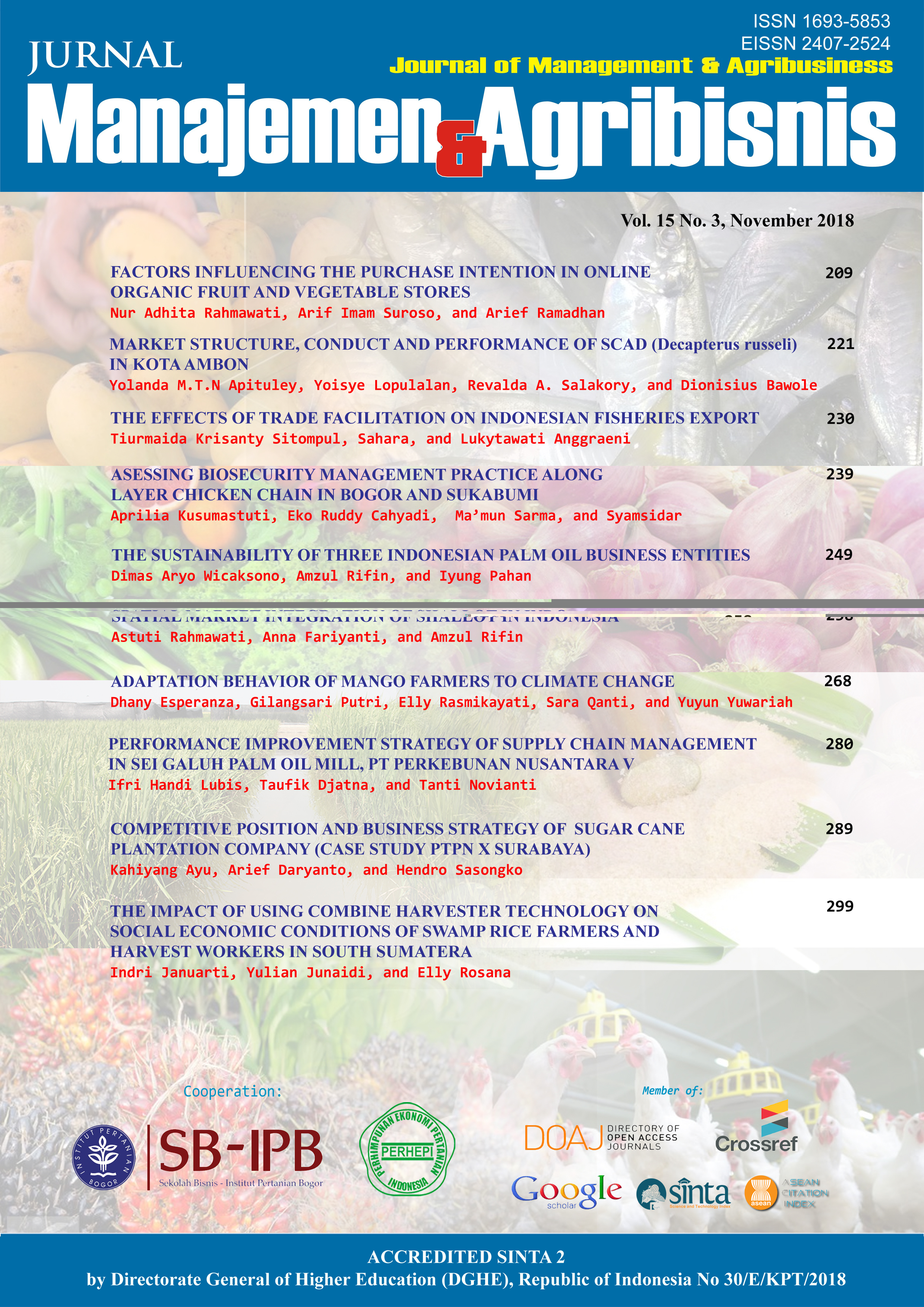Market Structure, Conduct and Performance of Scad (Decapterus russeli) in Kota Ambon
Abstract
This research is aimed to analyze the marketing system of Scad (Decapterus russeli) by analyzing the market structure, behavior, and performance. It was conducted in traditional markets: Mardika and Transit Passo, Ambon from September to December 2014. The method used was survey for 40 of 45 fish traders in these markets, selected in simple random sampling. The analyses used included: 1). Integration of vertical market, 2). Elasticity of price transmission, and 3). Pricing efficiency. The results show: (1) market structure of scad in Ambon is not integrated and leads to oligopoly; (2) change of 1% at the consumers’ price level leads to less than 1 % of price change in the fishermen’s price level, indicating that scad marketing system is inefficient; and (3) the marketing system of scad in channel 3 is inefficient. The smallest share (89%) was also showed in this channel. Scad market structure was not perfectly integrated for the oligopoly practice by traders. Therefore, dependence of fishermen on traders should be reduced i.e. by giving assistance such as loans with low interest rates especially in no fish season. Communication network should also be expanded so that market information can be transmitted perfectly to all marketing agencies in Ambon. The government should control the price fluctuations by setting the minimum price (floor price) and maximum price (ceiling price) in order to create price stability.
Keywords: conduct market, oligopoly market, performance market, scad structure, fish traders
Authors
Authors who publish with this journal agree to the following terms:
- Authors retain copyright and grant the journal right of first publication with the work simultaneously licensed under a Creative Commons Attribution License that allows others to share the work with an acknowledgement of the work's authorship and initial publication in this journal.
- Authors are able to enter into separate, additional contractual arrangements for the non-exclusive distribution of the journal's published version of the work (e.g., post it to an institutional repository or publish it in a book), with an acknowledgement of its initial publication in this journal.
- Authors are permitted and encouraged to post their work online (e.g., in institutional repositories or on their website) prior to and during the submission process, as it can lead to productive exchanges, as well as earlier and greater citation of published work (See The Effect of Open Access).

